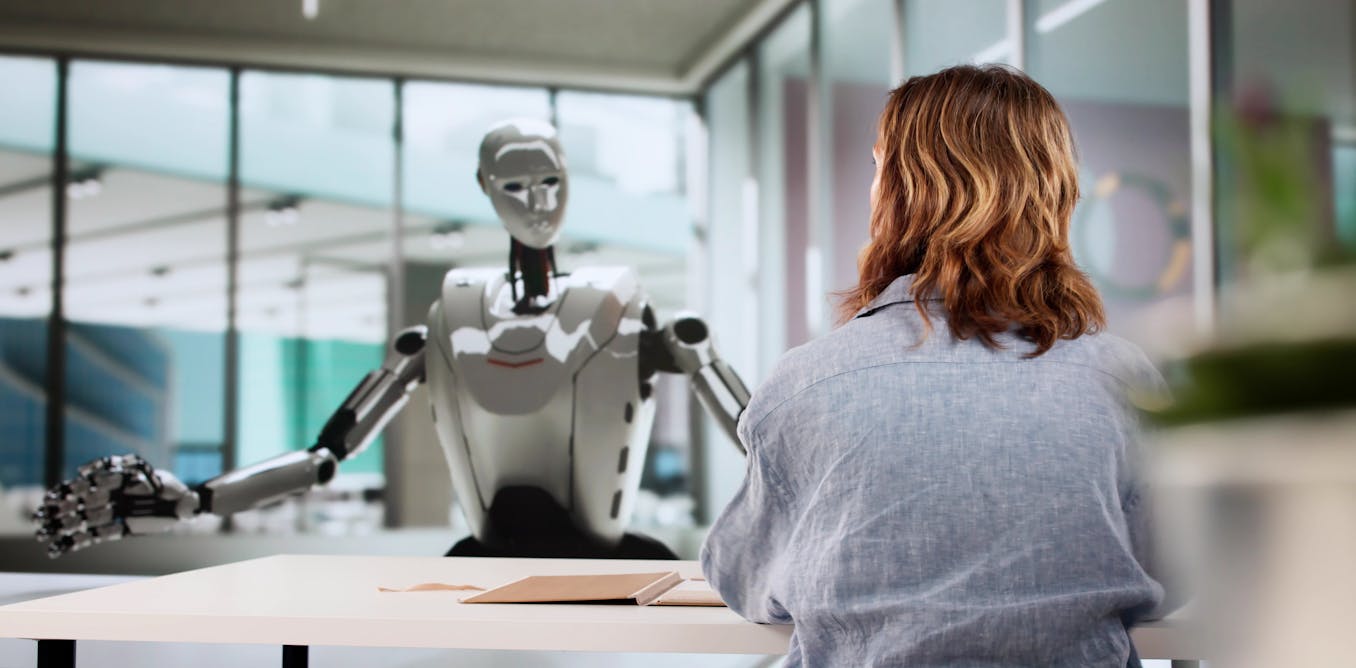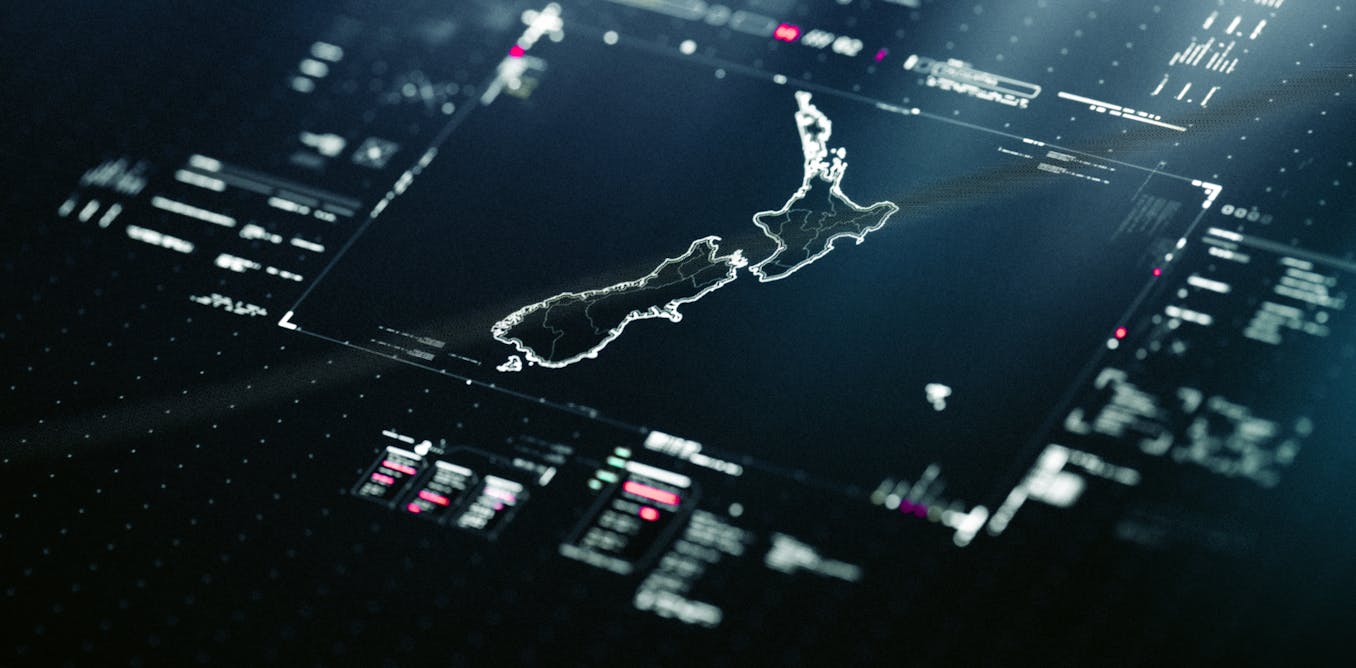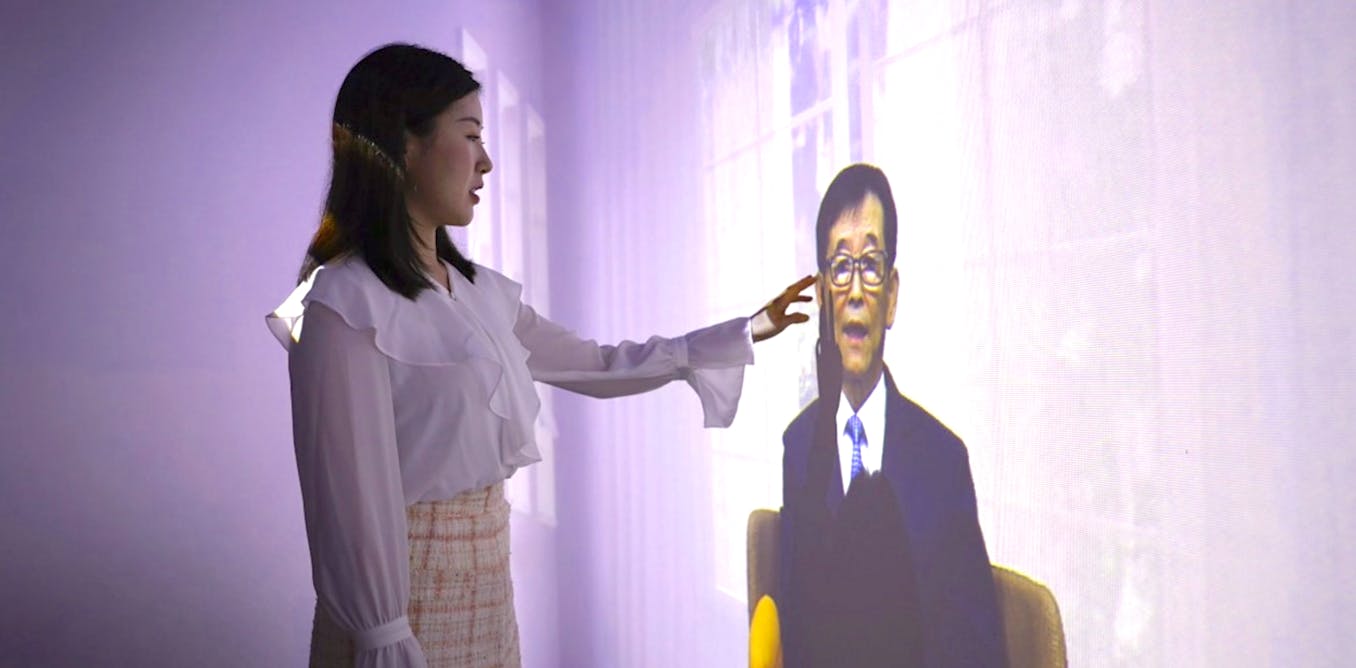Welcome to our monthly Roundup of the most shocking and mind-boggling news from the robot arena in this video we’ll be covering all the advancements in the robotic World from robots now being used in medicine augmented reality playing its role at aiding robots latest in robot navigation and robots now having Emotions all the way to tiny robot bugs being able to go into every nook and cranny shape shifters coming to life darpa’s latest challenges and the answer as to whether we need robot Androids we have it all and more. Don’t forget to watch to the very end to catch up with all things robotic happening right around you.
The advancements in the world of robotics are truly mesmerizing. From robots being used in medicine to robots now having emotions, the future of technology is truly exciting. Robots are now being used in medicine to stabilize enzymes for spinal cord injuries, while augmented reality is aiding in the customization of robot arms for various applications.
Researchers have also developed tiny bug-inspired robots that can access hard-to-reach spaces, as well as shape-shifting robots that can move in a more purposeful way. The DARPA Subterranean challenge has also showcased the potential of robots in autonomous navigation in challenging environments. The future of robotics is truly remarkable, and these advancements are just the beginning of what is to come. Subscribe to our channel for more updates on the latest in artificial intelligence, robotic news, and technology developments.
Watch the video by Artificial Intelligence News Daily
Video Transcript
Welcome to our monthly Roundup of the most shocking and mind-boggling news from the robot arena in this video we’ll be covering all the advancements in the robotic World from robots now being used in medicine augmented reality playing its role at aiding robots latest in robot navigation and robots now having
Emotions all the way to tiny robot bugs being able to go into every nook and cranny shape shifters coming to life darpa’s latest challenges and the answer as to whether we need robot Androids we have it all and more don’t forget to watch to the very end to catch up with
All things robotic happening right around you but before we begin how about subscribing to our Channel and pressing the Bell icon to never miss out on another upload of ours with that said let’s Jump Right In highlights of the month using robots for spinal cord injuries ever imagine what the world of
Healthcare would be like if doctors could have the Precision of robots well by employing artificial intelligence and Robotics to formulate therapeutic proteins a team led by Rutter’s researchers has successfully stabilized an enzyme able to degrade Scar Tissue resulting from spinal cord injuries and promote tissue regeneration the study recently published in advanced
Healthcare materials details the team’s groundbreaking stabilization of the enzyme Condren ABC offering New Hope for patients coping with spinal cord injuries this study represents what one of the first times artificial intelligence and Robotics have been used to formulate highly sensitive therapeutic proteins and extend their activity by such a large amount it’s a
Major scientific achievement said Adam Gormley the Project’s principal investigator and an assistant professor of biomedical engineering at ruer School of Engineering s soe at Rutter’s University New Brunswick augmented reality helping robot arms have you ever thought what could be achieved if augmented reality and robotics came together well not to
Fret this flexible arm which was designed and created at Imperial College London can twist and turn in all directions making it readily customizable for potential applications in manufacturing spacecraft maintenance and even injury Rehabilitation instead of being constrained by rigid Limbs and firm joints The Versatile arm is readily
Bendable into a wide variety of shapes in practice people working alongside the robot would manually bend the arm into the precise shape needed for each task a level of flexibility made possible by the slippery layers of myar sheets inside which slide over one another and can lock into place however configuring
The robot into specific shapes without guidance has proven to be difficult for users to enhance the robot’s user friendliness researchers at imperial’s Reds or robotic manipulation engineering design and science lab have designed a system for users to see an AR are how to configure their robot wearing mixed
Reality smart glasses and through motion tracking cameras users see templates and designs in front of them superimposed onto their real world environment they then adjust the robotic arm until it matches the template which turns green on successful configuration so that the robot can be locked into place using Geographic hints to help robots
Navigate understandably the way in which most robots navigate is very different from the the way most humans navigate robots are the happiest when they have Total Environmental understanding with some sort of full geometric reconstruction of everything around them plus exact knowledge of their own position and orientation Lars pre-existing Maps powerful computers and
Even a motion capture system if you can afford it the demands of autonomous robots Never End obviously this stuff doesn’t scale all that well with that in mind Dro Shaw and Professor Sergey LaVine at the University of California Berkeley are working on a different approach their take on robotic
Navigation does away with the high-end power hungry components what suffices for their navigation technique are a monocular camera some neural networks a basic GPS system and some simple hints in the form of a very basic human readable overhead map such hints may not sound all that impactful but they enable
A very simple robot to efficiently and intelligently travel through unfamiliar environments to reach far off destinations robots have emotions now Precision Effectiveness and efficiency are understandable but expecting emotions from robots that blows our mind and should blow yours too scientists from The Faculty of engineering information and systems at the
University of tukuba devised a text message mediation robot that can help users control their anger when receiving upsetting news this device may help improve social interactions as we move towards a world with increasingly digital Communications while a quick text message apology is a fast and easy way
For friends to let us know they’re going to be late for a planned Meetup it is often missing the human element that would accompany an explanation face to face or even over the phone it is likely to be more upsetting when we are not able to perceive the emotional weight
Behind our friends regret at making us wait now researchers at the University of tsukuba have built a handheld robot they called omo which was equipped with a movable weight actuated by mechanical components inside its body by Shifting the internal weight the robot could express simulated emotions the robot was
Deployed as a mediator for reading text messages a text with unwelcome or frustrating news could be followed by an exhortation by omo to not get upset or even Sympathy for the user with the medium of written digital communication the lack of social feedback redirect Focus From the cender and onto the
Content of the message itself author Professor fum Tanaka says the mediator robot was designed so that it can suppress the user’s anger and other negative interpersonal motivations such as thoughts of Revenge and instead fostered forgiveness robot bugs that can go where you can’t these ancient creatures can squeeze through the tiniest cracks fit
Snuggly into tight spaces and survive in harsh environments there aren’t many places that are off limits to an insect now can you imagine a robotic bug that will do as you say well that’s exactly why researchers at the University of Pittsburgh have created tiny bug inspired robots that can carry out tasks
In hard-to-reach spaces and inhospitable environments these robots could be used to access confined areas for Imaging or environmental evaluation take water samples or perform structural evaluations said Jun fanga who led the work as a PhD student in industrial engineering at the Swanson School of Engineering anywhere you want to access
Confined places where a bug could go but a person could not these machines could be useful for many creatures under a certain size like trap jaw ants mantis shrimp and fleas jumping across a surface is more energy efficient than crawling those impulsive movements were replicated in the robotss which are made
Of a polymeric artificial muscle the robots latch on to build up energy and then release it in an impulsive burst to Spring Forward usually actuation in the artificial muscles we work with is fairly slow we were drawn to the question how do we take this artificial
Muscle and use it to generate a jumping actuation rather than slow actuation the answer lay in the interplay of molecular order and geometry the curved composite shape of the polymer muscle allows it to build energy when it is powered the way the molecules are aligned in the muscle
Draws inspiration from the natural world where their combined actuation builds energy into the structure said Mosen tabrizy co-author of the study and PhD student in industrial engineering at the Swanson school this is accomplished using no more than a few volts of electricity shape shifters now a possibility we’re talking shape shifters
Coming to life physicists have discovered a new way to coach soft robots and materials that allow them to move and function in a more purposeful way the research led by the UK’s University of maath is described today in science advances authors of the study believe their breakthrough modeling on
Active matter could Mark a turning point in the design of robots with further development of the concept it may be possible to determine the shape movement and behavior of a soft solid not by its natural elasticity but by human controlled activity on its surface the surface of an ordinary soft material all
Always shrinks into a sphere think of the way water beads into droplets the beading occurs because the surface of liquids and other soft material naturally contracts into the smallest surface area possible but active matter can be designed to work against this tendency an example of this inaction
Would be a rubber ball that’s wrapped in a layer of nanorobots where the robots are programmed to work in unison to distort the ball into a new predetermined shape say a star it is hoped that active matter will lead to a new generation of machines whose
Function will come from the bottom up so instead of being governed by a central controller the way today’s robotic arms are controlled in factories these new machines would be made from many individual active units that cooperate to determine the machine’s movement and function this is akin to the workings of
Our own biological tissues such as the fibers in heart muscle Kawasaki’s IEX robot a success you may have heard of beex earlier Maybe in an earlier one of our weekly roundups too it is as near as we can tell a robotic Ibex designed by Kawasaki and inspired by the fiercely species of goat
Native to many mountainous regions of Africa and Eurasia beex made its first appearance at this year’s irx in Japan and we should talk about why a Kawasaki robot IEX now exists besides of course the simple fact that it’s just so darn fun to say out loud Kawasaki has been
Working on a robust humanoid platform called Kido since 2015 and beex is a friend of that program masayuki subbe who is in charge of the development of the RHP was interviewed recently on Kawasaki robotics website about the beex program through the development of Kido we felt the difficulty of biped robots
Because humanoid robots have the same shape as humans they are highly versatile with the potential to do everything that humans can ultimately do however it will take a long time to put it to practical use on the other hand we are also developing a self-propelled service robot that moves on Wheels but
Legs are still suitable for moving on rough terrain rather than wheels so halfway between humanoid robots and wheeled robots we wondered if there was an opportunity that’s why we started developing beex a quadruped walking robot we believe that the walking technology cultivated in the development of humanoid robots can definitely be
Applied to quadruped walking robots DARPA Subterranean challenge Cornelius a hog sized robot with fat rubber tank treads has come to a stop in a small verdant Courtyard on the Spanish Revival Campus of California State University Channel Islands it’s either autonomous or broken Kevin noler says squinting
Into the Summer sun noler who has been building robots for decades knows that it can be hard to tell the difference between a machine that’s kaput and one that’s cogitating suddenly Cornelius Sparks to life the robot charges toward a backpack lying on the ground about 15 ft away but
Then halfway into its Journey it gets marooned on a large rock it saw the backpack and the way it’s programmed at the moment it just mindlessly drives toward it with some difficulty you can gather that Cornelius is in detection mode which obligates it to seek backpacks obstacles be damned what might
Look like the quotidian work of Robotics undergrads anywhere is actually the fevered runup by team known as coordinated robotics to a huge event in the world of autonomy the final round of the Subterranean challenge hosted by the US government’s defense Advanced research project agency or DARPA in
September 2021 Cornelius and the 20 odd other robots in the coordinated Fleet were trucked off to ky’s Louisville Mega Cavern to compete DARPA has held public challenges like subt since 2004 leave the strawberry picking to them 10 years back a company called agrobot demonstrated a strawberry harvesting robot in a field in Davis
California today agrobot strawberry picker remains a prototype the long weight underscores the challenge for any berry picking robot identify a berry that is ripe enough to pick grasp it firmly but without damaging the fruit and pull hard enough to separate it from the plant without harming the plant
Agrobot CEO Juan Bravo said his company’s machine can’t compete with people who can pick Fruit by hand hand and pack it into clam shells still Growers are looking ahead to a day when it will be hard to find people willing to stoop in the fields all day and
Expensive to pay them so Growers technologists and researchers are continuing to pursue machines that can do the job in the latest sign of this interest indoor farming company bowy recently acquired traptic a Silicon Valley startup created in 2016 that last year began commercial deployments with nature rpe and Blazer Wilkinson Bowe
Will adapt traptic for indoor vertical farming because its systems like most of its competitors primarily operate outside in the fields of California or Florida traptic creators say it can pick 100,000 strawberries a day it will now work exclusively in bowy indoor Farms marking the first use of robotic arms at
The company which relies heavily on computer vision sensors and Technology to grow lettuce for customers like Safeway and Walmart bowy intends to move robotic arms between indoor strawberry rows as it does in fields using automated vehicles in addition to harvesting bowy will explore the use of robotic arms to pollinate strawberry
Flowers and do maintenance work like thinning or pruning leaves birdbot addresses Energy Efficiency concerns graceful elegant powerful flightless birds like the ostrich are a mechanical Wonder ostriches some of which weigh over 100 kg run through the Savannah at a up to 55 kmph the ostrich’s outstanding locomotive performance is thought to be
Enabled by the animals like structure unlike humans Birds fold their feet back when pulling their legs up towards their bodies why do the animals do this why is this foot movement pattern energy efficient for walking and running and can the bird’s leg structure with all its bones muscles and tendons be
Transferred to walking robots Alexander badre Spritz has spent more than 5 years on these Quest question S at the max plank Institute for intelligent systems he leads the dynamic Locomotion group his team works at the interface between biology and Robotics in the field of biomechanics and neurocontrol the
Dynamic Locomotion of animals and robots is the group’s main focus together with his doctoral student Alor agami sarvestani badri britz has constructed a robot leg that like its natural model is energy efficient birdbot needs fewer Motors than other machines and could theoretically scale to large size on
March 16th badre Spritz aami castani the roboticist metan city a director at mpis published their research in the journal science robotics do we even need Android robots at all remember Nicola the Android under development at reiken a scientific research institute in Japan Nicholas’s job is to help researchers validate the accuracy of facial
Expressions which it does by doing its best to make a bunch of facial expressions that hopefully can be identified by humans it’s just ahead at the moment but it will eventually have body parts and it’s generally modeled on a male human child to promote natural interactions with both adults and
Children always a dicey proposition with robots this is part of a larger project from riken called The Guardian robot project the goal of which is to develop an autonomous robot that can be close to people and make people feel the heart once such a robot is realized it will be
Accepted by people and will play an active role in every aspect of our homes and Society but if it’s going to do that does it really need to rely on an Android form factor for those natural interactions that riken is looking for not everyone is sure about this to be
Clear niola here is absolutely not the worst Android we have come across and it’s a research platform too so we shouldn’t judge it too harshly that’s especially true because experiments show that it’s effective at what it’s supposed to do people were able to accurately interpret the facial expressions that the robot was making
The reason that this research was necessary is because Androids can be tricky to read at times especially when making Expressions associated with negative emotions which are more difficult to distinguish and that’s one of the reasons why some are so skeptical that Androids are the best answer for
Human robot interaction and if we were the reiken researchers we’d also back off a little bit on the somewhat aspiration ational Claim about robots making people feel the heart even more dubious is the assertion that they will play an active role in every aspect of our homes and Society making people feel
Things is not particularly difficult for robots there’s a bit of a leap though from feeling things to playing an active role in everything even now robots that make us feel things can play very small targeted roles in our homes in society this is not to say that such roles
Aren’t important and effective and valuable just that and we’re sorry to have to keep saying this we really need to make sure that we keep expectations realistic and grounded with that we come to the end of this video consider subscribing to our channel to join in on all the future fun
Video “LEAKED: Robot and Future Technology News” was uploaded on 03/12/2024 to Youtube Channel Artificial Intelligence News Daily












-2.png)









